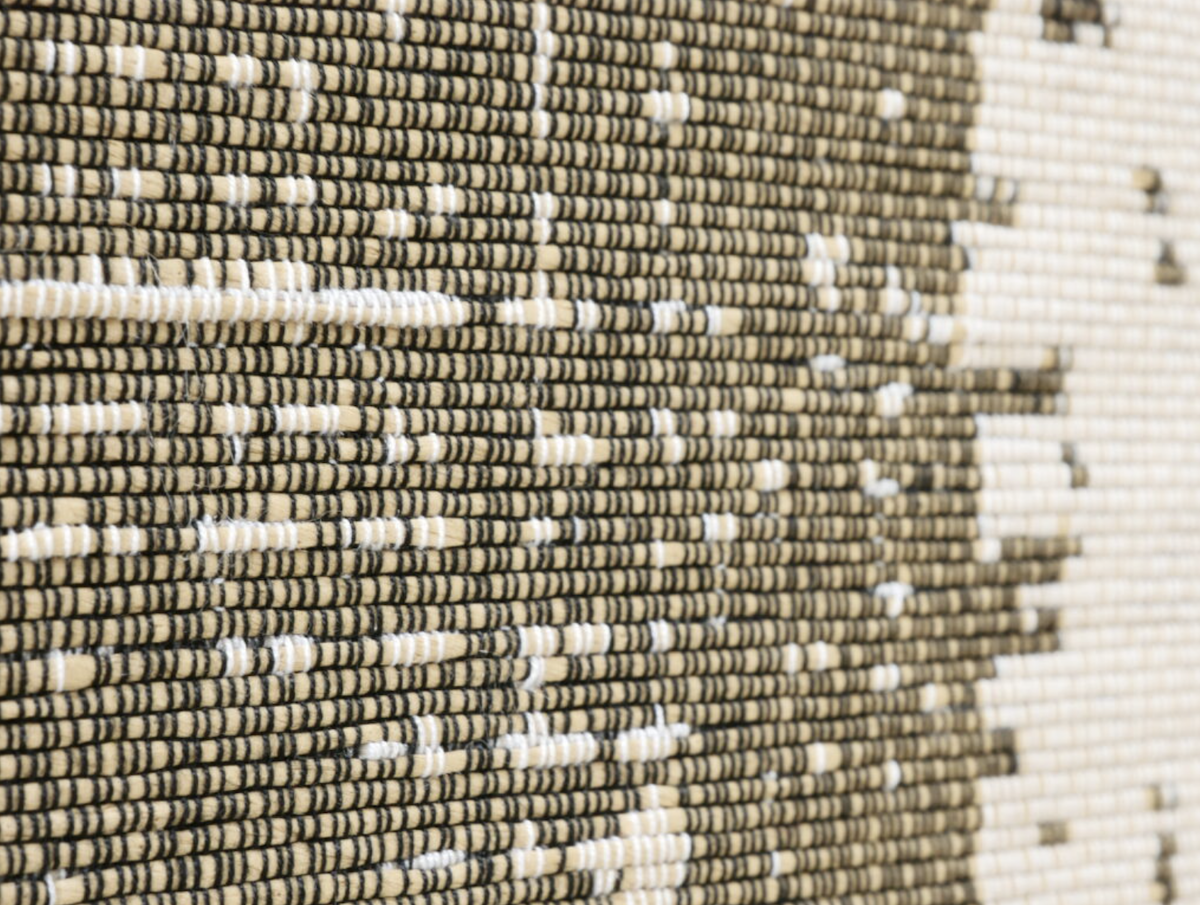



We spoke to artist Aliki van der Kruijs (NLD) about her creative practice and the inspirations behind the work featured in our current exhibition Collapsed Ecologies on site at the Australian Tapestry Workshop until June 2024.
How did you get into making art?
In my childhood I was always drawing, making things, changing things my room almost every week, so it was very logic to focus on creativity during my high school and further study into the arts. I began my education in graphic and fashion design, before doing a Master in Applied Arts. During the Masters I found a way of working to create textiles that narrate stories and the skills and crafts learned along the way come together in my current practice.
Who or what inspires you to create?
It’s often a feeling I have towards a landscape, inside the weather, a phenomenon, or a very strong intuition to explore something, that creates a question or a curiosity. My works are articulations about trying to understand what is evolving in landscapes and the natural world and how.
What does your practice involve – what techniques do you use in your work?
Textile techniques are the core of my practice. In the beginning I was mainly printing and painting on textiles where in the last years weaving took more presence because with weaving you can construct your own textile line by line, and with that it mimics for me more the relation to ‘writing’. In the past year I came back to painting and silkscreening again for a new colour research work on soil.
What does a day in the studio look like?
A day in the studio the mornings are often occupied with arranging practical things, and in the afternoons and evenings I work on new materials, weave, spin yarns, draw and arranges images. During days in the studio I take time to process what I have experienced on fieldwork outside.
How does your work in this exhibition relate to your practice and where it is heading?
It was during a residency in Maastricht (NL) where the work in the show came about. I took the act of walking into my practice as a way to do research and to get a deep(er) understanding of a place by listening to the landscape. ‘Listening with your feet’ was a phrase I read and gave me the courage to spend for a year round a few days in the week in an open-pit limestone quarry. I wanted to document the place and its seasonality without using a camera, or any other technical apparatus, and finding out what my senses experience and how to translate this into material. As part of this, I was looking for a way to make a work about the limestone material and the time it took to form, and created a colour and texture library by spinning yarn and screenprinting with limestone. What I have experienced from this residency is that working on site, in a landscape or a specific place/space makes possible to react from a bodily experience which makes it possible to translate more accurate that what I sensed or learned from the place and time spent in the landscape. At the moment I am in Japan for a traveling residency where water and the concept of the floating world is the research focus. Being in with the waters and stories we meet will infuse our senses that we will work out towards a presentation in Kyoto.
‘Collapsed Ecologies’ is open to the public to view 10am-5pm, Thursday – Saturday until 7 June 2024